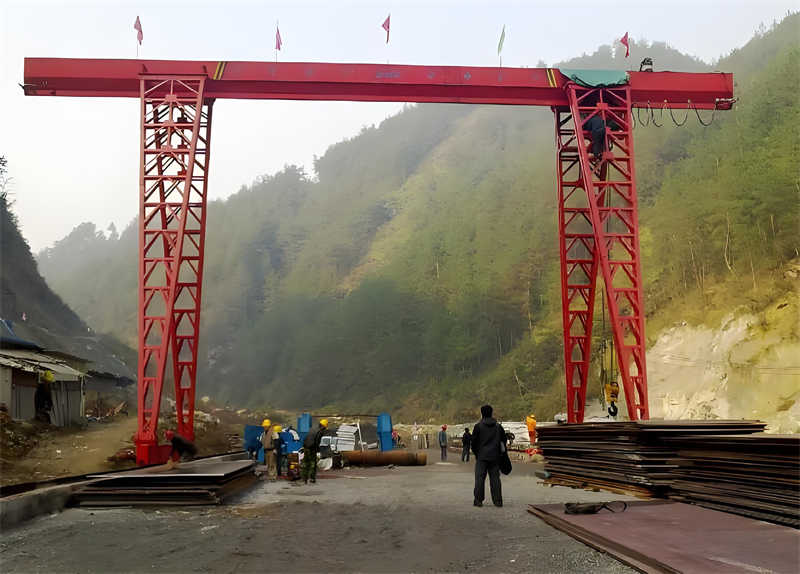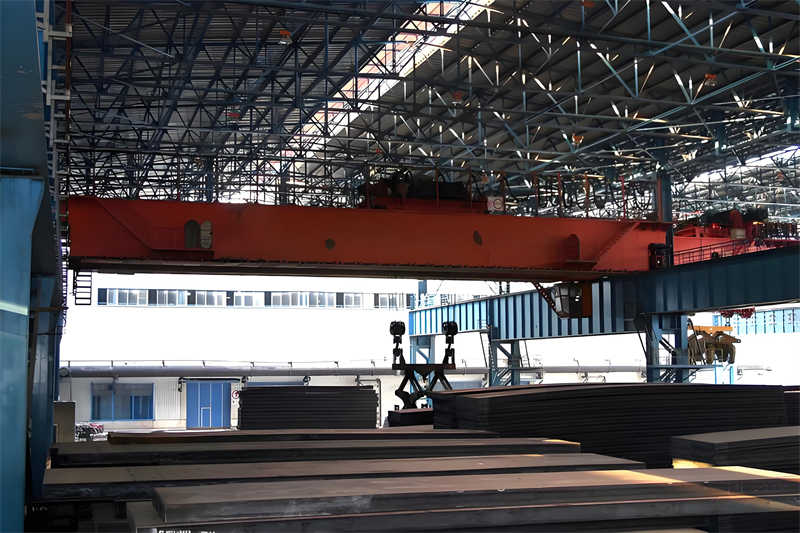16-May-2025
Workshop Cranes for Energy & Mining: Heavy-Duty Solutions for Demanding Environments
Introduction
In the energy and mining sectors, workshop cranes play a critical role in handling heavy equipment, maintaining machinery, and ensuring safe operations in some of the most challenging environments. From oil rigs and power plants to underground mines and wind farms, the right crane system improves efficiency, reduces downtime, and enhances worker safety.
This guide covers:
✅ Best crane types for energy & mining applications
✅ Key features for harsh environments
✅ Safety and compliance considerations
✅ Cost factors and ROI analysis

Why Energy & Mining Operations Need Specialized Cranes
Manual lifting in these industries leads to:
✖ Increased safety risks (explosive atmospheres, heavy loads)
✖ Equipment damage (from improper handling)
✖ Production delays (slow maintenance and repairs)
The right crane system solves these challenges by:
✔ Handling extreme loads (50–500+ tons for turbines, drills, etc.)
✔ Operating in hazardous conditions (explosion-proof, corrosion-resistant)
✔ Reducing downtime (faster equipment servicing)
✔ Improving worker safety (eliminating manual lifts in confined spaces)
Best Crane Types for Energy & Mining
1. Gantry Cranes – For Heavy Loads & Outdoor Use
Best for: Oil fields, mining yards, wind turbine assembly
Capacity: 10–500+ tons
Key Benefits:
- No permanent installation – movable where needed
- Wide spans (up to 30m for large components)
- Weather-resistant (galvanized steel, corrosion-proof coatings)
Ideal Uses:
- Moving drill rig components
- Assembling wind turbine blades
- Loading/unloading mining trucks
2. Bridge Cranes – For Power Plants & Processing Facilities
Best for: Indoor heavy lifting (turbines, generators, crushers)
Capacity: 5–100+ tons
Key Benefits:
- Full coverage of maintenance areas
- Precision control (±1mm for alignment tasks)
- Explosion-proof options (for hazardous zones)
Ideal Uses:
- Turbine maintenance in power plants
- Conveyor belt repairs in mines
- Heavy machinery installation

3. Jib Cranes – For Confined Spaces & Maintenance Work
Best for: Pump stations, compressor rooms, underground mines
Capacity: 0.5–10 tons
Key Benefits:
- Compact footprint (fits tight spaces)
- 360° rotation for flexible positioning
- Low maintenance (minimal moving parts)
Ideal Uses:
- Servicing valves and pipelines
- Replacing motor components
- Handling tools in maintenance bays
4. Monorail Cranes – For Repetitive Material Transport
Best for: Processing plants, assembly lines
Capacity: 1–20 tons
Key Benefits:
- Fixed-path efficiency (ideal for repetitive tasks)
- Low-cost automation (motorized trolleys available)
- Easy integration with existing systems
Ideal Uses:
- Moving ore samples in labs
- Transporting equipment along production lines
- Feeding materials into crushers
Key Features for Energy & Mining Cranes
When selecting a crane for these industries, prioritize:
🔹 Durability
- Corrosion-resistant coatings (for saltwater, chemical exposure)
- High IP ratings (dustproof/waterproof components)
🔹 Safety Compliance
- ATEX/IECEx certification (explosion-proof for hazardous areas)
- Overload protection (critical for heavy lifts)
🔹 Remote Operation
- Radio/pendant controls (for hazardous zones)
- IoT monitoring (predictive maintenance alerts)
🔹 Customization
- Long-reach designs (for wind turbine hubs)
- High-temperature hoists (for furnace maintenance)
Case Study: How [Mining Co. X] Reduced Downtime by 45%
A copper mine implemented explosion-proof bridge cranes with:
- Remote monitoring for predictive maintenance
- Modular design for quick repairs
Results:
✔ 45% faster equipment servicing
✔ Zero crane-related incidents in 3 years
✔ ROI in 14 months
Cost Factors for Energy & Mining Cranes
| Factor | Price Impact |
|---|---|
| Capacity | +$15K–$100K per 10-ton increase |
| Explosion-proofing | +30–50% vs standard cranes |
| Span Length | +$5K–$20K per 5m increase |
| Automation | +$25K–$75K for smart controls |
Typical Price Ranges:
- Standard Gantry Crane (50-ton): $150K–$300K
- Explosion-Proof Bridge Crane: $200K–$500K
- Heavy-Duty Jib Crane (10-ton): $25K–$50K
Choosing the Right Crane for Your Operation
Ask these questions:
- What’s your heaviest load? → Include future expansion needs.
- Indoor or outdoor use? → Weatherproofing requirements.
- Hazardous area classification? → ATEX/IECEx compliance.
- How critical is uptime? → ROI on automation vs manual.
Final Recommendations
- Best for Mining Yards: Heavy-duty gantry cranes
- Best for Power Plants: Explosion-proof bridge cranes
- Best for Maintenance: Rotating jib cranes
Need a Custom Solution?
➡ Contact our energy & mining crane specialists for a free site assessment.

